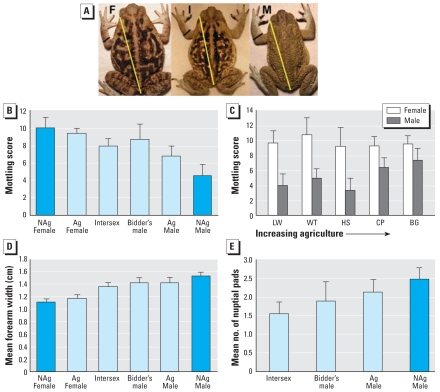Figure 4.
Sexually dimorphic secondary sexual traits are altered at agricultural sites. (A) Photographs of female (F), intersex (I), and male (M) toads. We measured mottling by counting the number of color changes that occurred along the yellow transect line, and the portion of the forelimb that was measured and compared is shown as a black line. Males can have nuptial pads on the first three digits, whereas females have none. (B) Mean mottling score across each individual’s body separated by sex group. (C) Mean mottling score for females and males across sites; agricultural intensity increases along the x-axis from left to right. (D) Mean body-size–corrected forelimb width for each sex group. (E) Mean number of nuptial pads by sex groups. NAg, toads collected from nonagricultural areas; all other toads were collected from agricultural sites. Error bars indicate 95% confidence intervals.

